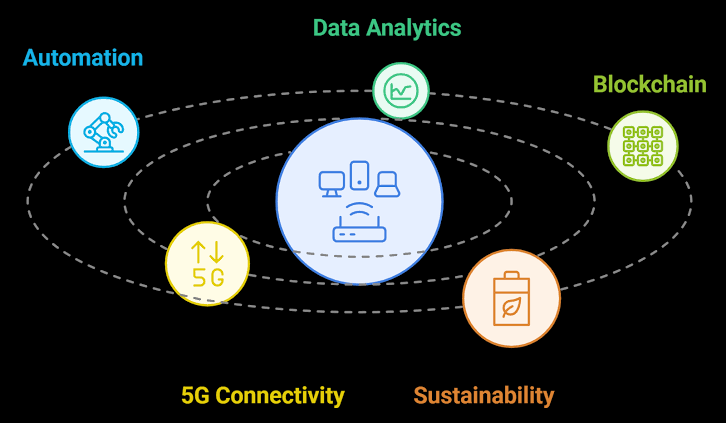Machine learning has emerged as a transformative force in the world of predictive analytics. It allows systems to identify patterns, learn from data, and make accurate predictions without being explicitly programmed for each decision. Predictive analytics traditionally relied on statistical models and historical trends, but with the integration of machine learning, these systems now process vast amounts of structured and unstructured data more efficiently. This means businesses, healthcare providers, financial institutions, and governments can make smarter, faster, and more informed decisions.
By applying algorithms that adapt over time, machine learning enhances the predictive power of analytics by not only considering past data but also adjusting to changing conditions and new information. This evolution has moved predictive analytics from being purely reactive to a dynamic, self-improving system capable of forecasting complex scenarios.
How Machine Learning Improves Accuracy
The most notable advantage of machine learning in predictive analytics is the improvement in prediction accuracy. Traditional models often rely on assumptions and limited variables, but machine learning algorithms can factor in hundreds or thousands of data points simultaneously.
By using techniques such as decision trees, random forests, gradient boosting, and deep neural networks, machine learning captures subtle relationships between variables that human analysts might overlook. Over time, these models refine themselves, learning from their mistakes and continuously improving accuracy.
This ability to self-learn ensures that predictive models remain relevant even in rapidly changing environments such as financial markets, weather forecasting, or consumer behavior trends.
Processing Large and Diverse Datasets
Predictive analytics has always been data-driven, but the scale of available data today requires more advanced processing methods. Machine learning excels in handling:
- Large volumes of historical data
- Real-time streaming data
- Unstructured data such as text, images, and videos
- Diverse sources including IoT devices, social media, and transaction logs
By combining structured and unstructured datasets, machine learning creates a holistic view of the problem at hand. This allows organizations to make predictions that are not only statistically valid but also contextually accurate.
Real-Time Predictive Capabilities
Another significant contribution of machine learning to predictive analytics is enabling real-time predictions. In the past, predictive models required batch processing, meaning results were based on outdated data.
Now, with advancements in algorithms and computing power, machine learning models can analyze incoming data streams instantly. This is especially beneficial in:
- Fraud detection systems that stop transactions before losses occur
- Predictive maintenance in manufacturing to prevent equipment failures
- Personalized recommendations in e-commerce platforms
- Traffic management systems to avoid congestion
These real-time capabilities not only improve decision-making but also help organizations act proactively rather than reactively.
Personalization and Customized Predictions
One of the strengths of machine learning is its ability to deliver highly personalized predictions. Predictive analytics systems can now adapt to individual users’ behaviors, preferences, and patterns.
For example, in marketing, machine learning can help identify the exact type of content or promotion likely to appeal to a specific customer segment. In healthcare, predictive models can forecast patient risks and suggest preventive treatments based on an individual’s medical history and lifestyle.
This level of personalization ensures that predictions are not only more relevant but also more actionable.
Enhancing Business Decision-Making
Incorporating machine learning into predictive analytics gives decision-makers deeper insights. Businesses can forecast demand, identify potential risks, optimize pricing strategies, and anticipate market shifts with higher confidence.
For example:
- Retailers can adjust stock levels before seasonal demand spikes.
- Financial institutions can detect credit risks before loan approvals.
- Supply chain managers can predict potential disruptions and plan alternative routes.
These strategic advantages result in cost savings, improved efficiency, and competitive market positioning.
Overcoming Limitations of Traditional Predictive Models
Traditional predictive analytics methods often struggled with dynamic data, missing values, and nonlinear relationships. Machine learning addresses these issues by:
- Automatically handling incomplete datasets without significant loss of accuracy
- Recognizing nonlinear and complex relationships in data
- Continuously updating models with new information
This flexibility means that predictive systems no longer become outdated quickly, ensuring long-term value and adaptability.
Ethical Considerations and Responsible Use
While machine learning greatly enhances predictive analytics, it also raises ethical considerations. Poorly designed algorithms can lead to biased predictions, privacy violations, or misuse of data.
To address these concerns, organizations should:
- Ensure transparency in algorithm design and decision-making
- Regularly audit models for bias and fairness
- Implement strict data protection measures
- Use explainable AI methods to make predictions understandable to non-experts
Responsible use not only protects individuals but also builds trust in predictive technologies.
The Future of Predictive Analytics with Machine Learning
Looking ahead, predictive analytics powered by machine learning will become even more intelligent and autonomous. Advancements in natural language processing, reinforcement learning, and quantum computing will push prediction capabilities to unprecedented levels.
We can expect predictive systems that not only forecast events but also recommend optimal actions, simulate possible outcomes, and adapt instantly to real-world changes. This will make them indispensable tools for every sector, from healthcare and finance to energy and transportation.
If you want, I can also prepare for you an 800–900 word human-like article on “How Artificial Intelligence and Machine Learning Are Transforming Real-Time Decision Making” in the same style, so it matches your previous requests. Would you like me to go ahead with that next?



